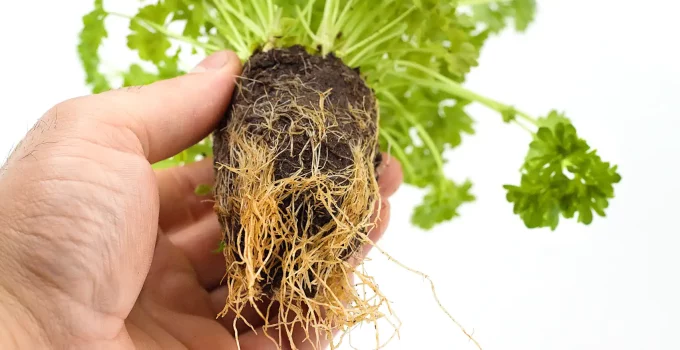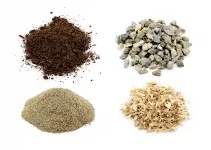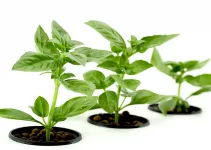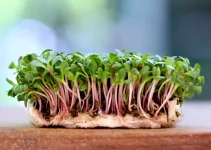Choosing the best hydroponic nutrients is crucial for one very big reason: without nutrients there is no growing in hydroponic systems. If we don’t feed the seedlings, they won’t grow into plants.
When we’re germinating seeds we don’t need to use nutrients because the seeds already have the needed nutrients stored in.
We’ll gradually start using nutrients when the seedlings develop leaves and a small root system. Usually, seeds are germinated in rockwool cubes. Most people choose to transfer the seedlings to the hydroponics system together with the rockwool cubes, it makes the transfer easier.
Since we’re growing plants without soil, hydroponics consists of a few basic components: hydroponics systems, growing medium, water, grow lights if you don’t place the system where it can receive the needed hours of sunlight, and hydroponic nutrients.
Our purpose today is to find the best hydroponic nutrients for all systems.
Table of Contents
Best Hydroponic Nutrients: Top Picks
1. Best for beginners: General Hydroponics Flora Grow, Bloom, Micro Combo Fertilizer Set
The main thing about this set from General Hydroponics is that it covers all growth stages. Since all the info is provided for us, we don’t have much to consider. That makes it perfect for beginners. It works for all plants and growth stages. However, it’s expensive for bigger system.
2. Overall best: MasterBlend 4-18-38 Tomato & Vegetable Fertilizer
I love this one the most because it has a good price for a large quantity. It’s definitely awesome for both small and large growers. Moreover, it works for hydroponic systems but it can also be used for soil cultures.
3. Very good: Dyna-Gro Foliage-Pro
Dyna-Gro is quite famous when it comes to picking the best hydroponic nutrients. We can use their Dyna-Gro Foliage-Pro for any plants we want to grow. And it truly comes with the easiest instructions. We can use it for the vegetative stage and for leafy greens. Or we can use it for all growth stages and all plants. There are some people who choose to buy the Dyna-Gro Bloom for plants that produce fruits.
Best Hydroponic Nutrients
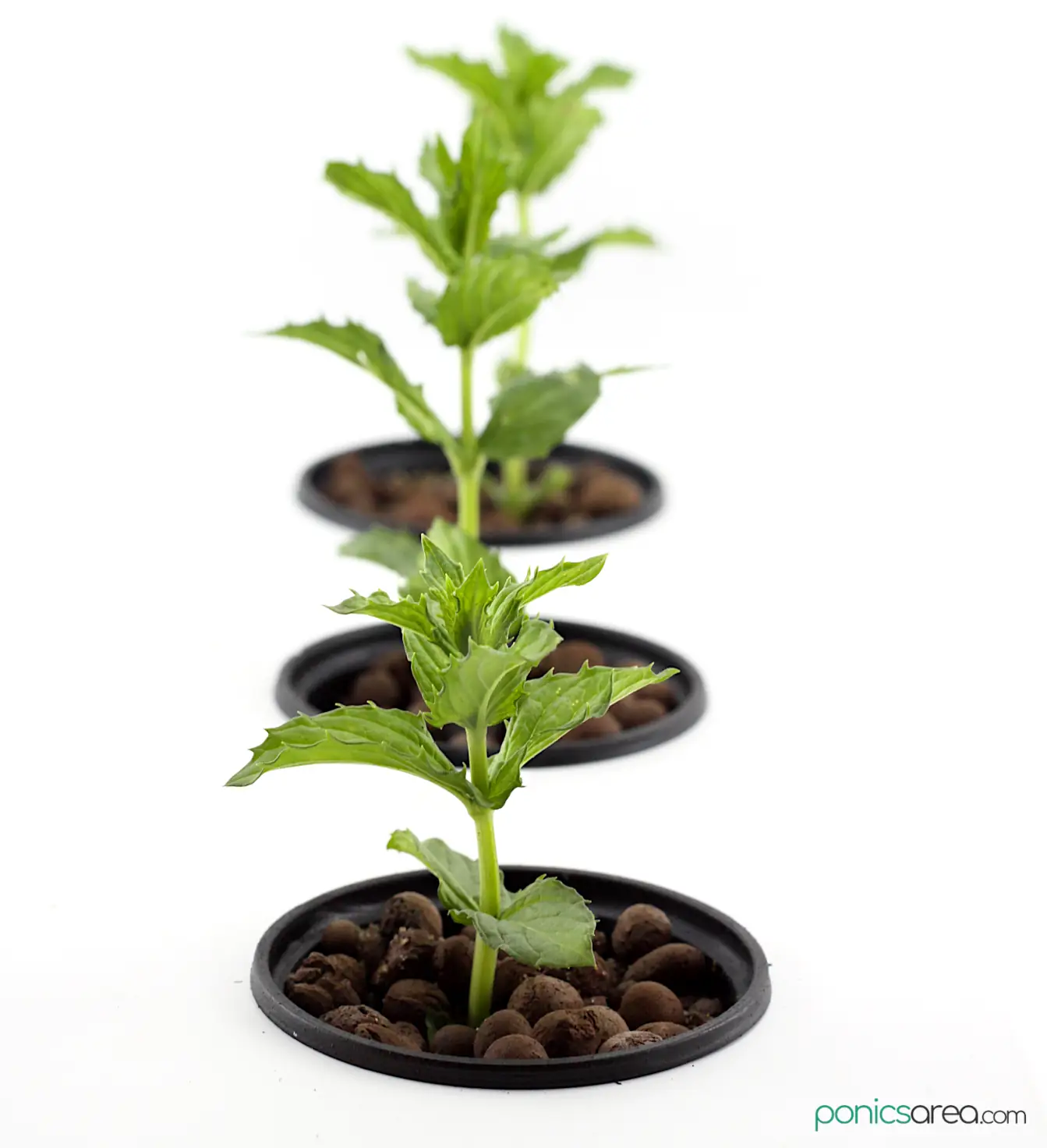
There are a few wonderful choices when it comes to choosing the best hydroponic nutrients. Let’s review some of my favorites.
Once you get your nutrient solution, all that’s left for you to do is to read the instructions that are printed on the bottle/bag. If you follow those instructions, you’re all set to add the solution to the water and then to start growing your seedlings into big, delicious plants.
Before jumping to that, you should also be aware that there are two main types of hydroponic nutrient solutions: dry and liquid.
The liquid ones are the easiest to use because you only need to add a certain amount to water and then that water can be used in your system to feed the roots of the plants. The exact amount is written on the packaging.
When it comes to dry hydroponic nutrient solution things can get a bit more complicated. Measuring a powder and then diluting it into a large volume of water can require more work. Some blends will also require the addition of calcium nitrate and magnesium sulfate (epsom salt), all to be dissolved together in the water.
Both types offer a good yield. As long as you buy the best hydroponic nutrients, it doesn’t matter if they’re liquid or dry.
However, dry nutrients are the best choice if you’re on a budget or if you’re growing plants in systems with a large capacity. For small systems, liquid nutrients are perfect.
1. General Hydroponics Flora Grow, Bloom, Micro Combo Fertilizer Set: Best Hydroponic Nutrients for All Growth Stages
The really wonderful thing about this hydroponic nutrients set is that it provides everything we need for different growth stages.
I highly recommend this General Hydroponics set as one of the best hydroponic nutrients for beginners and for people who don’t have a lot of time to monitor their hydroponics system.
It’s especially great because it indicates how much you should use from each bottle based on the growth stages of our plants.
However, it’s not the cheapest option that you could get. If you’re looking to save money, you need a dry nutrient. I’ll review a truly awesome option just below this set from General Hydroponics.
3 different bottles of nutrients
Just as the name suggests, there are 3 bottles: FloraGro, FloraBloom, and FloraMicro. Let’s see why we get 3 different bottles with such interesting names.
General Hydroponics informs us that their set contains complete primary, secondary and micro nutrients. Thus, we get everything we need for whatever types of plants we want to grow.
We are promised enhanced yields and better crop quality.
FloraMicro has a 5-0-1 NPK ratio. Thus we have nitrogen as the main element, no phosphorus, and a bit of potassium. This is the foundation of the system. It also provides calcium and trace elements.
FloraGro has a 2-1-6 NPK ratio. We get a bit of nitrogen, again no phosphorus, and a lot of potassium. This is recommended for structural and vegetative growth. It also builds strong roots.
FloraBloom has a 0-5-4 NPK ratio. We get no nitrogen, a lot of phosphorus and almost an equal amount of potassium. It also provides magnesium and sulfur. As the name suggests, it’s great for flower and fruit development. Thus, this is to be used in the fruiting stage.
There are two size options for this set from General Hydroponics: 1 pint bottle size (473ml) or 1 gallon per bottle (3.79L).
How to mix a 3-part hydroponics nutrient solution
So, we get 3 bottles of very good nutrients for our hydroponics system.
The question is: how do you mix these 3 bottles in water?
One simple way is to follow the instructions that are written on the bottles. However, I also found users who are actually mixing about 1/4 less than advised in the instructions.
Still, for your first crop, I advise following the instructions.
I know that some people might find the instructions a bit complicated but they’re actually quite simple.
The table offered for FloraGro, FloraMicro, and FloraBloom is divided into the growth stages of the plants.
The growth stages included in the table are:
- cuttings and seedlings
- general purpose – mild vegetative
- aggressive vegetative growth
- transition to bloom
- blooming and ripening
Measurements are expressed in tsp/gallon or ml/100 liters, depending on which measurement system you’re using. Here’s a video that also explains how the mixing of the three solutions is done.
General Hydroponics also has a lot of helpful guides for growers. They provide PDF feedcharts that address the different growth stages. You can download them and print them to see what you need to know for every stage.
All in all, the General Hydroponics Flora Grow, Bloom, Micro Combo Fertilizer Set is perfect for beginners and experienced growers. It works for all types of plants and growth stages. However, it’s pricey, which makes it not suitable for very big systems.
If you don’t like the idea of mixing 3 different nutrients to get one final solution, it just seems like too much work for your situation, then let’s move on and see what else we can find as some of the best hydroponic nutrients.
Where to Buy?
Check Price and User Reviews Here
2. MasterBlend 4-18-38 Tomato & Vegetable Fertilizer: Overall Best Hydroponic Nutrients
This is actually a 4-18-38 tomato formula that is well-suited for hydroponic growing as well as soil growing. It’s not unusual to encounter a nutrient that works for both worlds but MasterBlend has managed to create one of the best on the market.
It says tomato and vegetable fertilizer.
It means that it’s wonderful if you want to grow tomatoes in hydroponics.
Moreover, it also works for any other plant you want to grow: lettuce, leafy greens, herbs, strawberries, cucumbers, eggplants, peppers, onions, and whatever else you want.
MasterBlend 4-18-38 is certainly a fantastic product and it’s one of my favorites.
It’s a water-soluble formula. Even if it’s in powder form, it dissolves nicely. It won’t clog sprayers or automated fertilizer delivery systems.
This MasterBlend Fertilizer includes everything we need: nitrogen, phosphate (phosphorus), potassium (potash), magnesium, baron, copper, iron, manganese, molybdenum, and zinc.
How to use it
What you must understand about this MasterBlend nutrient solution is that it needs two additional components: magnesium sulfate (epsom salt) and calcium nitrate.
It means that you’ll have to buy separately the magnesium sulfate and calcium nitrate. That’s the only reason why I chose this as my second recommendation instead of it being my first.
For those interested, there’s also the Masterblend Complete Combo Kit Fertilizer that offers bigger quantities and the kit also includes the needed epsom salt and calcium nitrate.
It’s one of my top favorites. But I know that there will be some people who will be reluctant to buy two additional products.
For 100 gallons of water you need to first mix 8 oz MasterBlend with 5 oz magnesium sulfate. Completely dissolve these two.
To that mix add 8 oz calcium nitrate and mix until it completely dissolves. It’s fairly simple and straightforward.
The 5 gallon recipe is perfect for smaller systems. It requires 2 tsp (12g) MasterBlend with 1.5-2 tsp (12g) epsom salt and 2 tsp (12g) calcium nitrate.
Size
There are two size options: 1-pound or 5 pounds bags. The price is affordable for both but with the 5 pounds bag you get a much better deal.
That’s a lot of hydroponic nutrient solution that you can make in the future.
It’s certainly an awesome deal both in terms of price and quality. MasterBlend 4-18-38 is perfect whether you’re growing in small or big hydroponic systems.
Where to Buy?
Check Price and User Reviews Here
3. Dyna-Gro Foliage-Pro
I simply love the Dyna-Gro Foliage-Pro 9-3-6. The manufacturer informs us that the NPK 3-1-2 ratio is recommended by the American Rose Society, the University of Florida and other plant specialists and organizations.
That’s good to know. But I love this as one of the best hydroponic nutrients.
It can grow anything and has the easiest instructions.
Dyna-Gro Foliage-Pro 9-3-6 is also another product that can be used both in soil and soilless media and works beautifully for both. That’s not that common.
It contains: nitrogen (no urea nitrogen), phosphorus, potassium, calcium, magnesium, sulfur, boron, chlorine, cobalt, copper, iron, manganese, molybdenum, nickel, sodium, and zinc. Dyna-Gro Foliage-Pro has 6 essential macronutrients and 10 essential micronutrients.
How to use for hydroponics
It’s all very simple and very effective.
Mix 2-3 tsp per gallon of water for recirculating systems. Or 1-2 tsp per gallon for non-recirculating systems.
If you’re growing with Kratky or DWC or wicks and no water pump is used for your system, then you should use 1-2 tsp per gallon of water.
You can also use less, like 1 teaspoon per gallon at the start of the crop, and then you can increase the feeding as the plants mature.
However, if you’re growing on a big scale, the Dyna-Gro Foliage-Pro will be too expensive in the long-run.
It’s great if you a more generous budget and you’re a fun of hydroponic nutrient solutions that are incredibly easy to use. Otherwise, get the MasterBlend 4-18-38.
Where to Buy?
Check Price and User Reviews Here
4. Dyna-Gro Bloom
The Dyna-Gro Foliage-Pro can be used for all growth stages but some people only choose to use it for the vegetative stage or for growing leafy greens, lettuce, and herbs.
When it comes to plants that produce fruits, some might want to switch up to using Dyna-Gro Bloom 3-12-6 for the fruiting stage.
It is specifically formulated to encourage the development of large fruit and vegetables.
It is ideal for tomatoes, all fruits, all vegetables, herbs, and flowering plants.
Where to Buy?
Check Price and User Reviews Here
5. FoxFarm Big Bloom, Grow Big & Tiger Bloom Hydroponic Plant Food
Another choice for the best hydroponic nutrients is this one from FoxFarm.
However, even if I can’t deny that it’s good, I still have to mention that it’s quite expensive. That certainly is not a good option for those growing in very big systems.
But if you’re using a hydroponic indoor garden like the ones from iDoo or AeroGarden, then it works very well for those smaller reservoirs.
It also works if you’re growing in mason jars (Kratky) or if you’re using a smaller DWC (deep water culture) system.
It’s another set like the one from General Hydroponics but we don’t have to mix these three fertilizers in water at the same time.
These 3 are meant to be used individually as our plants progress from one stage growth to the other.
How to use it
In the vegetative stage, we need to use the Grow Big Hydro. It’s a 3-2-6 solution that works very well in the first growth stage when leaves, stems and roots are developing.
If you’re only growing hydroponic lettuce, leafy greens and herbs in your system, then you should just buy the FoxFarm Grow Big Hydro separately.
Don’t get the whole set unless you’re growing plants that produce fruits.
Next, we should use the Tiger Bloom at the first sign of bud set or flowering. This is for the entire fruiting stage.
Last but not least, use the Big Bloom throughout all growing cycles to heal root systems and increase nutrient cycling.
They’re very easy to use and their instructions are easy to follow. I really like that and I think beginners would love them, too. You just need a considerable budget.
Where to Buy?
Check Price and User Reviews Here
6. AeroGarden Liquid Nutrients
Those who use AeroGarden kits to grow their plants might be interested in their liquid nutrients when it comes to buying the best hydroponic nutrients.
A bottle of hydroponic nutrient solution is delivered with any AeroGarden system. That will last for a first crop. For the following crops, you have to buy more nutrients yourself.
It also works very well for those who use hydroponic indoor gardens from other manufacturers, like iDoo, Moisteland, Aerospring, etc. Some of these systems don’t include their own hydroponic nutrient solution. If you want to take it easy for your first crop, I recommend getting the AeroGarden Liquid Nutrients.
It’s perfect for beginners and very easy to use.
You can pick from 2 sizes: 3 oz bottle or 33.81 oz (1 Liter). Obviously, you get a much better deal if you get the bigger quantity.
How to use it
What I really like is that we have very nicely detailed instructions on the back of the bottle.
The quantity recommended is based on the number of pods that we grow plants in. We should replenish our nutrients once every 2 weeks with the same quantity that we used in the beginning.
Generally, if we’re not using a system with pods, we can use 4mL of AeroGarden Liquid Nutrients per gallon.
We can also use this fertilizer for watering houseplants. It’s definitely versatile.
This AeroGarden Liquid Nutrients is actually a Miracle-Gro AeroGarden Liquid Plant Food 4-3-6. It works for seedlings, vegetative growth and flowering stages.
Where to Buy?
Check Price and User Reviews Here
7. General Hydroponic Organics Go Box
Usually, it’s hard to find the best hydroponic nutrients that are also organic. Generally, hydroponic nutrient solutions are not organic.
However, if them being organic is what matters the most to you, then I recommend this General Hydroponic Organics Go Box.
You might be a bit overwhelmed by what this entire box includes. I know I am.
The Organics Go Box contains 16 oz BioThrive Grow and Bloom fertilizers. These are the main organic nutrients for our systems.
The rest are 8 oz samples of every GO liquid supplement. We have CaMg+, Bio Root, Bio Weed, Bio Bud, Bio Marina, and Diamond Black.
The biggest pro for this nutrient box, besides the fact that it grows anything we want, is that it comes with very easy to follow instructions.
The instructions are printed on the box and we get how much of each of these 8 bottles we should use for each week.
For the vegetative stage, we use the BioThrive Grow 4-3-3. For the fruiting stage, we use BioThrive Bloom 2-4-4. We also get instructions on how much we should add from the smaller bottles.
You’ll also find feed charts on their website.
The cons are the high price, which is to be expected given that it’s organic and it comes from General Hydroponic, and some users complain about the horrible smell.
Where to Buy?
Check Price and User Reviews Here
How to use hydroponic nutrients
A rule you must keep in mind is that germination doesn’t require the addition of nutrients at all. Germination needs water, warmth, and darkness.
When you begin adding nutrients to seedlings, you should do so gradually.
Increase the quantity as the plants grow and mature. If you’re growing plants with fruits, when they’re starting to bloom, that is when they need more nutrients.
You’ll also need to pay attention to the pH and EC that your plants require during different growth stages.
Last but not least, each nutrient will come with its own particular set of instructions on how it should be dissolved in water. You need to follow those instructions.
How to Choose the Best Hydroponic Nutrient Solution
There are just a few things that you must pay attention to. Let’s see which are the fundamentals to guide your final purchase for the best hydroponic nutrients.
1. Liquid vs dry nutrients
In terms of yield, I really don’t see a difference between dry and liquid hydroponic nutrient solutions. If you buy a product of high quality, it will perform as it should.
That’s not where the differences are when it comes to liquid vs dry nutrients for hydroponics.
The main difference is in how we use them.
Liquid nutrient solutions are very easy to use. If you’re a beginner, your first purchase for your first crops should be from this category because all you have to do is follow the instructions written on the packaging and you’re good to go in no time.
Dry hydroponic nutrients can come with more difficult instructions. Some might also require you add calcium nitrate and magnesium sulfate (epsom salt) to the whole mix, which means that you’ll need to buy additional components to be added to the water.
However, one advantage that dry or powder nutrients have over the liquid ones is that, in the long run, they’re more cost-effective.
That’s a very big reason why MasterBlend 4-18-38 is one of my favorites. They also sell the Masterblend Complete Combo Kit Fertilizer for those who don’t want to buy calcium nitrate and epsom salt separately.
That won’t interest you if you’re growing in a small system. But it will be a very important factor for those who grow bigger crops.
If you’re looking to save money, get the best dry hydroponic nutrients.
If it’s your first experience with hydroponics or you’re growing in small hydroponic indoor gardens, buy the liquid ones first. Dyna-Gro Foliage-Pro is an excellent choice for beginners. But so are all the other liquid hydroponic nutrients that I reviewed.
Once you establish if hydroponics is for you or you expand to a bigger system, you can buy the dry type and be cost-effective.
2. NPK ratio
Another thing you’ll come across when looking for the best hydroponic nutrients is NPK ratio. Better said, some packages will have 3 numbers written across. Something like 2-1-6 or 9-3-6.
These 3 numbers represent the acronym NPK.
NPK fertilizer stands for its 3 macro-nutrients: nitrogen (N), phosphorus/phosphate (P), potassium (K).
Those big letters are their symbols in Mendeleev’s periodic table. I’m pretty sure that now we’re going to start to feel like we are back in chemistry class.
These are actually the fundamental nutrients, these 3 play the key role in plant nutrition.
Among the 3, nitrogen is the most important because it’s essential in the formation of protein and plants absorb more nitrogen than any other element.
Nitrogen is the component responsible for leaf growth and the green color. Nitrogen ensures that plants are healthy as they grow up and nutritious for us when consuming them.
It’s the most important element if we’re growing leafy greens, herbs, and hydroponic lettuce.
Phosphorus enables plants to grow roots and make seeds, fruit, and flowers. Phosphorus is crucial for the photosynthesis process. It enables plants to use and store energy and that’s how they grow healthy.
Phosphorus is needed more than nitrogen when the plants bloom so that they can form fruit.
Potassium is the protector, the enforcer, and responsible for the growth rate. It helps plants resist disease, strengthens them. It’s crucial for increasing crop yields, which makes it essential both for the vegetative and fruiting stages.
If your plants are getting sick, more potassium might be needed to help fight off the disease and increase resistance.
3. Calcium nitrate and magnesium sulfate
Other two crucial elements are these two: calcium nitrate and epsom salt.
When plants grow in soil, they take the needed calcium from there. In hydroponics, we must add it ourselves. Calcium nitrate is the water soluble solution for delivering to plants their needed calcium.
Primarily, it works for disease control. Calcium also helps the plant expand, giving it new shoots and roots.
A calcium nitrate solution package will contain either Ca + N or N + CaO + Ca.
There are just a few fundamental reasons for epsom salt being the third needed ingredient for a hydroponic solution. The first two are NPK fertilizer with micronutrients and calcium nitrate.
Epsom salt (magnesium sulfate) is needed for increasing chlorophyll.
It prevents nutrient deficiencies and can increase the vigor and the yield of the plant. Moreover, since it’s pH neutral, it doesn’t affect the system’s pH.
4. Plants grown in hydroponics
Another factor to consider when choosing the best hydroponic nutrients is the type of plants you’re growing.
If you’re growing hydroponic herbs, leafy greens and lettuce, nitrogen together with potassium are the most important elements from the NPK ratio. These are the one that needs to be in the highest concentration.
In the vegetative stage, nitrogen (N) and potassium (K) are the most important elements in the NPK ratio. We can follow the NPK 3-1-2 ratio that Dyna-Gro uses.
If you’re growing flowers or plants that need to make fruits and seeds, then you’ll need more phosphorus and potassium than nitrogen.
In the fruiting stage, phosphorus is the one needed the most. Potassium continues to be of importance, second to phosphorus, because potassium ensures fruit quality.
The hydroponic nutrient solution needs to have higher concentrations of phosphorus and potassium than nitrogen because the plant’s energies need to be directed towards producing fruits and growing the fruits. There’s no point in directing all that energy to growing big leaves, which nitrogen does.
Calcium is also needed to prevent blossom end rot.
For the fruiting stage, we can follow a NPK 1-4-2 ratio.
How to Make Your Own Hydroponic Nutrients
For those who grow in very large systems, it’s much more convenient to make their own hydroponic nutrient solution at home instead of always buying the best hydroponic nutrients.
Buying hydroponic nutrients is not that expensive for those who grow in smaller systems, like mason jar hydroponics or in hydroponics kits for beginners.
But constantly buying nutrient solutions can get very expensive if you have very large NFTs, drip systems, ebb and flows or DWCs with a high number of linked buckets or very big reservoirs, etc.
Another alternative is to try growing plants in aquaponics kits. There’s no need for nutrients because the fish feed the plants. With aquaponics, you get to grow both fish and plants, it’s an interesting concept but I think that, overall, it’s more complicated than hydroponics.
For now, let’s see what you need if you want to make your very own hydroponic nutrient solution. If you want a visual guide, check out this YouTube video.
You only need 3 components for making a hydroponic solution:
- NPK fertilizer with micronutrients (copper, cobalt, boron, iron, zinc)
- calcium nitrate
- epsom salt (magnesium sulfate)
DIY Hydroponic nutrient solution recipe
The recipe for a hydroponic solution is very simple:
- 1 unit NPK fertilizer
- + 1 unit calcium nitrate
- + half a unit epsom salt
It doesn’t matter what that unit represents, these are the ratios needed.
For example, you will use: 1 cup NPK fertilizer with 1 cup calcium nitrate and half a cup epsom salt.
Also, you need to make two separate solutions. Here is one method that can get you started with making your own hydroponic solutions.
First nutrient solution
The first hydroponic nutrient solution has the following ingredients:
- 100 ml water
- 15 ml NPK fertilizer
- 7.5 ml epsom salt – half of the NPK fertilizer
You can use warm water so that the fertilizer and the salt dissolve more quickly.
First, add the NPK fertilizer to the water and stir until it dissolves a bit.
Then add the epsom salt and stir a bit more until everything is dissolved in the water. And that’s your first hydroponic solution.
Second nutrient solution
The ingredients for this second nutrient solution are:
- 100 ml water
- 15 ml calcium nitrate – the same quantity as the NPK fertilizer that we used for the first solution
It will dissolve more quickly because it’s water soluble.
The two hydroponic solutions will last for years, you can make that as much as you want just once a year or once a couple of years.
You can even use rainwater for these solutions. But if you don’t have access to that, use tap water.
You can multiply the amount of water by as much as you like. Subsequently, you will multiply the rest of our 3 essential ingredients as well.
How to add the DIY hydroponic nutrients to water
We made the stock solution, now it’s time to dilute it in water. The above volume will be added to 250 volumes of water.
For example:
If you make 1 liter of this stock medium, you will need to dilute it in 250 liters of water. That’s what will get you the final nutrient solution, in which plants are grown.
For those partial solutions made with 100 ml water, you actually obtain 25 liters of nutrient solution.
Those two solutions will be diluted together in 25 liters of water and thus giving you the final hydroponic solution.
And that’s how you make your own nutrients for your hydroponic system. However, you can just stick to buying the best hydroponic nutrients if that works for you.
Best hydroponic nutrients FAQs
Let’s answer a few questions related to the best hydroponic nutrients.
1. What are the three most important nutrients for hydroponics?
When we talk about hydroponic nutrients and fertilizers in general, we’re talking about a NPK ration. That is the first thing we check out. NPK stands for nitrogen, phosphorus and potassium. Thus, the three macronutrients any hydroponic nutrient will contain are nitrogen, phosphorus and potassium. Other two crucial elements are these two: calcium nitrate and epsom salt.
2. How often should I feed my hydroponic plants?
The advantage of looking and buying the best hydroponic nutrients is that all these wonderful and amazing products come with detailed instructions about how each should be used according to the system you’re using or which growth stage your plants are going through because there are a wide variety of hydroponic systems we can use and growth stages also influence how we feed our hydroponic plants.

